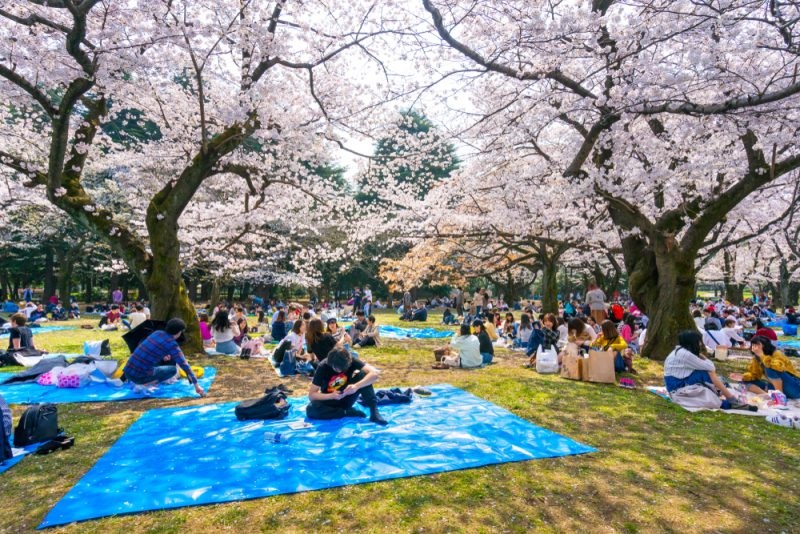Thousands travel to experience Japan’s 2021 sakura-cherry blossom

Travel Biz News —
The Japanese cherry blossom, or sakura, has long been adored by people across the globe. Thousands travel to Japan to view the wondrous spectacle of these white or pink flowers blooming en masse during the spring season of each year.
Sakura is regarded as a symbol of renewal, vitality, and beauty.
Gatherings of crowds for Hanami cherry blossom viewing festivals were discouraged in 2020 due to pandemic-related restrictions. However, it seems that tourists will have more access than ever before to Japan’s ideal viewing locations in its countless beautiful parks and gardens, by using innovative virtual technology from home.
The experience of witnessing the wonderous bloom of pink and white cherry flowers has long been a cherished annual tradition in Japan, and picnics and flower-viewing parties are popular for locals as well as an increasing number of international tourists.
Sakura usually starts in March at the south of the Japanese peninsula, where temperatures begin to rise earlier, before making its way north to the island of Hokkaido by early May.
Once the blossom begins, the flowers usually take around a week to reach full bloom, known as mankai, which also usually lasts about seven days.
As the cherry blossom is such a big attraction and lasts for such a short window of time, the Japan Meteorological Agency (JMC) frequently publishes and updates forecasts for the event every year. The bloom is expected early this year
The Japan cherry blossom forecast for 2021 predicts that the flowers will begin to bloom earlier than in a normal year due to a relatively warm winter.
The expected flowering date in the Kinki region, which includes Osaka and Kyoto, and the Kanto region, where the capital of Tokyo is located, is expected in mid-March. Meanwhile, sakura is currently expected to begin in the Kyushu and Tohoku regions either later in the month or in early April.
On Hokkaido, the cherry bloom is expected a little later than in 2020, beginning from late April in the southern and central parts of the island to early May in western and eastern regions.
Some of the most popular places for sakura viewing in Japan are the many parks and gardens of the vast number of shrines, castles, and temples across the country, including at the thousands of Hanami cherry blossom festivals that take place during the period.
Although most international travelers were not able to experience the cherry blossom in 2020 due to COVID-19 restrictions, many popular Sakura viewing sites have ensured that this won’t be the case in 2021 by introducing a number of virtual experiences.
“Even if you’re not planning to travel to Japan in spring 2021 to experience the natural phenomenon for yourself, you’ll still be able to enjoy it from home through numerous virtual experiences, including 360 panoramic video tours of iconic cherry blossom viewing locations,” jrailpass states in a statement.
Additionally, a number of Japanese virtual travel experiences have been set up to allow those planning to visit Japan to get to know popular attractions before their visit, as well as to provide a digital alternative to those currently unable to travel.
These include virtual tours of many of the most popular museums as well as live video feeds of iconic attractions such as Mount Fuji and the Jigokudani Snow Monkey Park.
Image : Hanami cherry blossom at Yoyogi Park in Tokyo ( JRailPass.com)
Feb. 24, 2021














